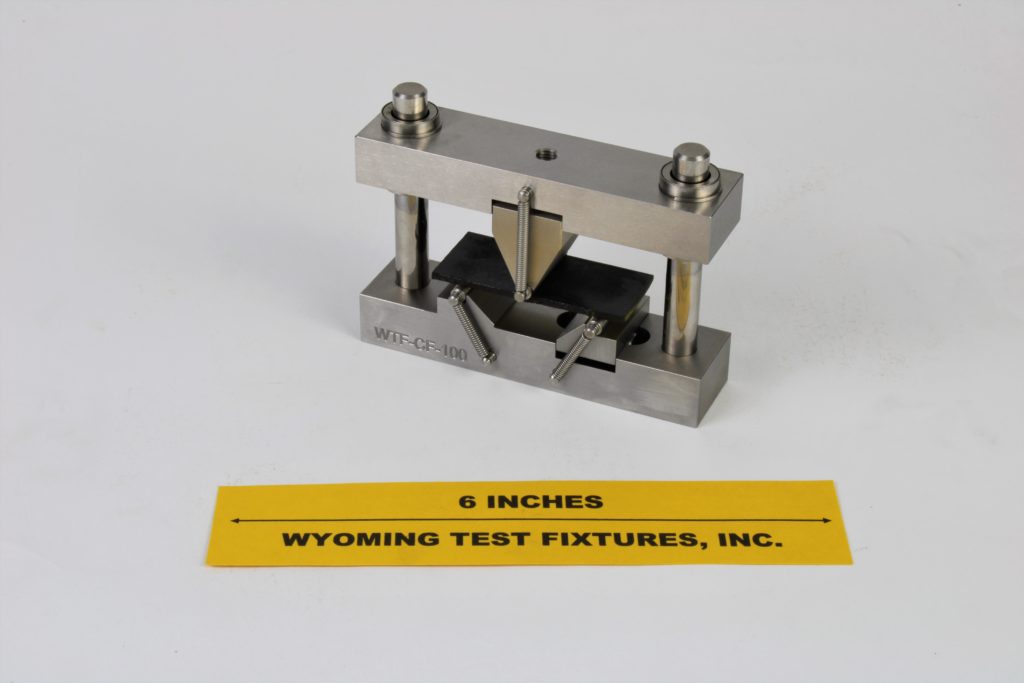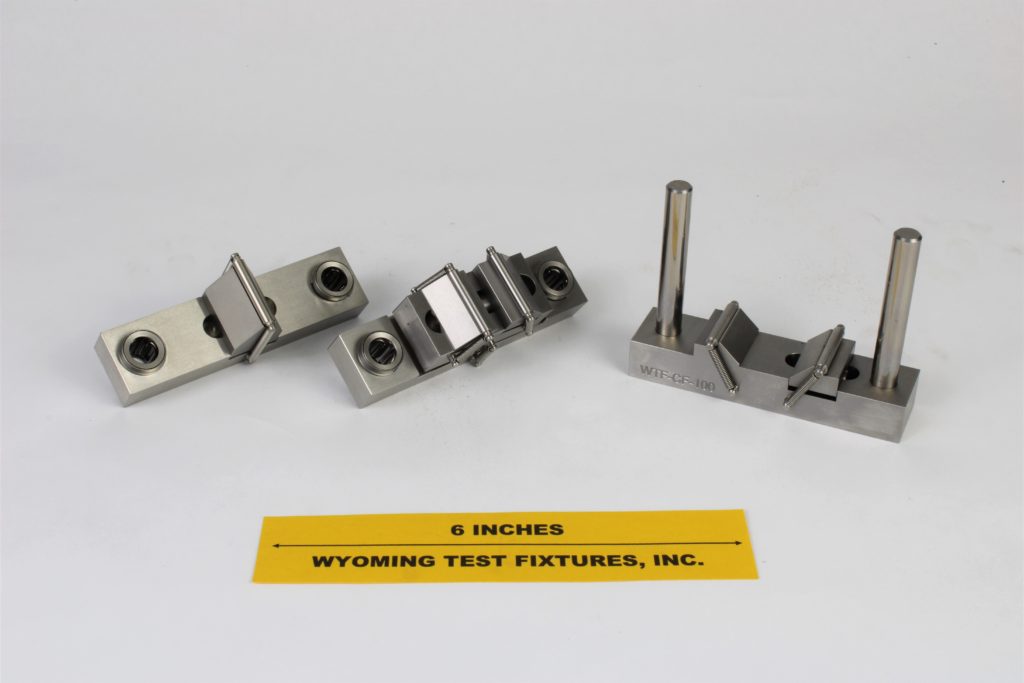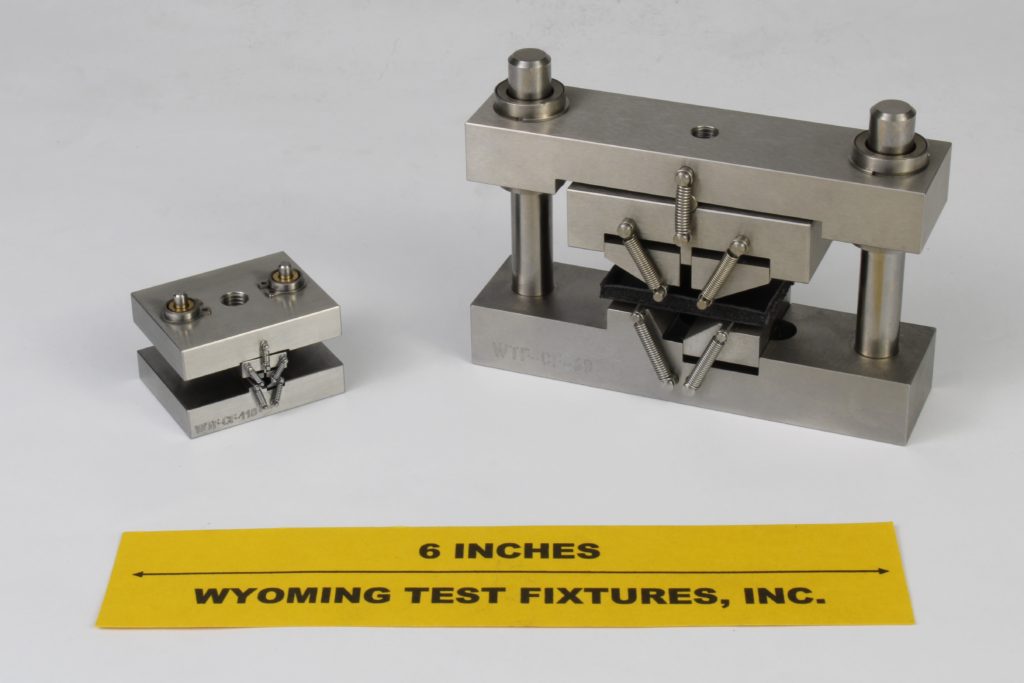Ceramic Flexural Strength Test Fixture (ASTM C1161)
Model No. WTF-CF (Stainless Steel)

Fig. 1: Ceramic Flexural Strength Test Fixture, fully articulated.
The Flexural Strength Test for Ceramics is primarily governed by ASTM Standard C1161 (Reference 1). This particular ASTM standard defines specific specimen sizes, corresponding to a choice of three support spans, viz., 20, 40, or 80 mm, termed Configurations A, B, and C, respectively. These configurations use specimens 1.5, 3.0, and 6.0 mm thick, respectively. Either three- or four-point loading, and either a semi- or a fully-articulated test fixture is permitted.The purpose of articulation is to accommodate any twist or lack of flatness of the test specimen since specimens are often tested in the as-fired state.
Configuration B, with four-point, fully-articulated loading, as shown in Fig. 1, is by far the most commonly used configuration. There is little reason to use semi-articulated loading since the fixture complexity, and thus cost, is not much less than for fully-articulated loading. Examples of semi-articulated fixtures are shown in Fig. 2.

Fig. 2: Semi-articulated three point flexure fixture (left), semi-articulated four-point flexure fixture (right).
There also are other ASTM standards for the flexural testing of ceramics and their composites. For example, ASTM C1341 (Reference 2) specifically addresses ceramic composites. It allows a range of specimen sizes and support span-to-specimen thickness ratios. Both three-point and four-point loading can be used.
ASTM C 1211 (Reference 3) is an extension of ASTM C1161 for testing at elevated temperatures. ASTM C1421 (Reference 4) is an extension for fracture toughness testing. The test fixtures are the same, however, as for those of ASTM C1161. Wyoming Test Fixtures can design and fabricate test fixtures to accommodate any of these standards.

Fig. 3: Miniature version of Ceramic Flexure Test Fixture

Fig. 4: Miniature version of Four Point Flexure Test
Sources of Additional Information:
1) ASTM Standard C 1161-13 (2013), "Flexural Strength of Advanced Ceramics at Ambient Temperature," American Society for Testing and Materials, West Conshohocken, Pennsylvania (first issued in 1990).
2) ASTM Standard C 1341-13 (2013), "Flexural Properties of Continuous Fiber-Reinforced Advanced Ceramic Composites," American Society for Testing and Materials, West Conshohocken, Pennsylvania (first issued in 1996).
3) ASTM Standard C 1211-13 (2013), "Flexural Strength of Advanced Ceramics at Elevated Temperatures," American Society for Testing and Materials, West Conshohocken, Pennsylvania (first issued in 1990 as an update of MIL-STD 1942, dated 1983).
4) ASTM Standard C 1421-10 (2010), "Determination of Fracture Toughness of Advanced Ceramics at Ambient Temperature," American Society for Testing and Materials, West Conshohocken, Pennsylvania (first issued in 1999).

